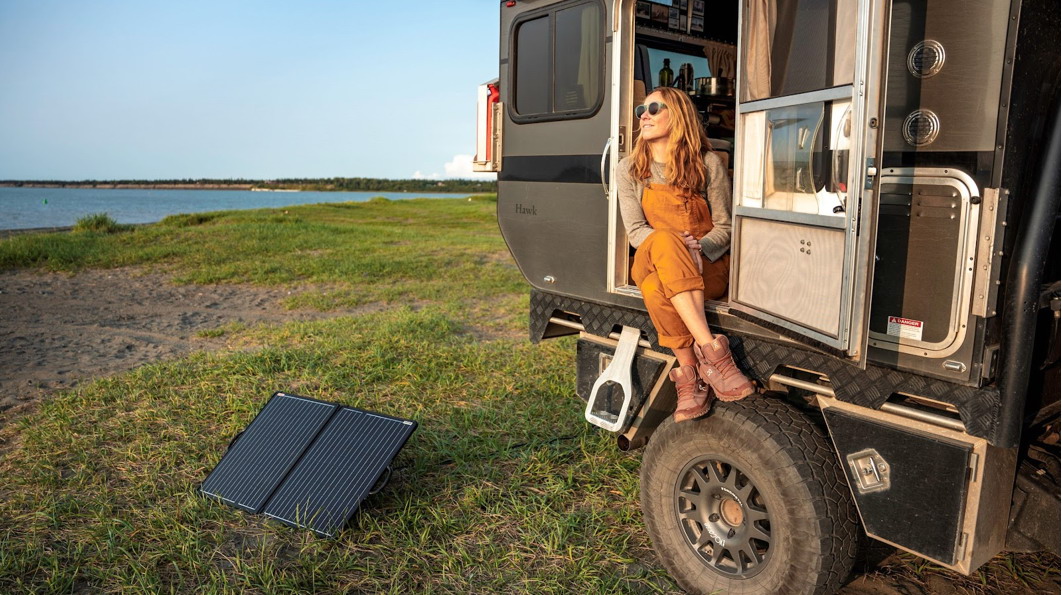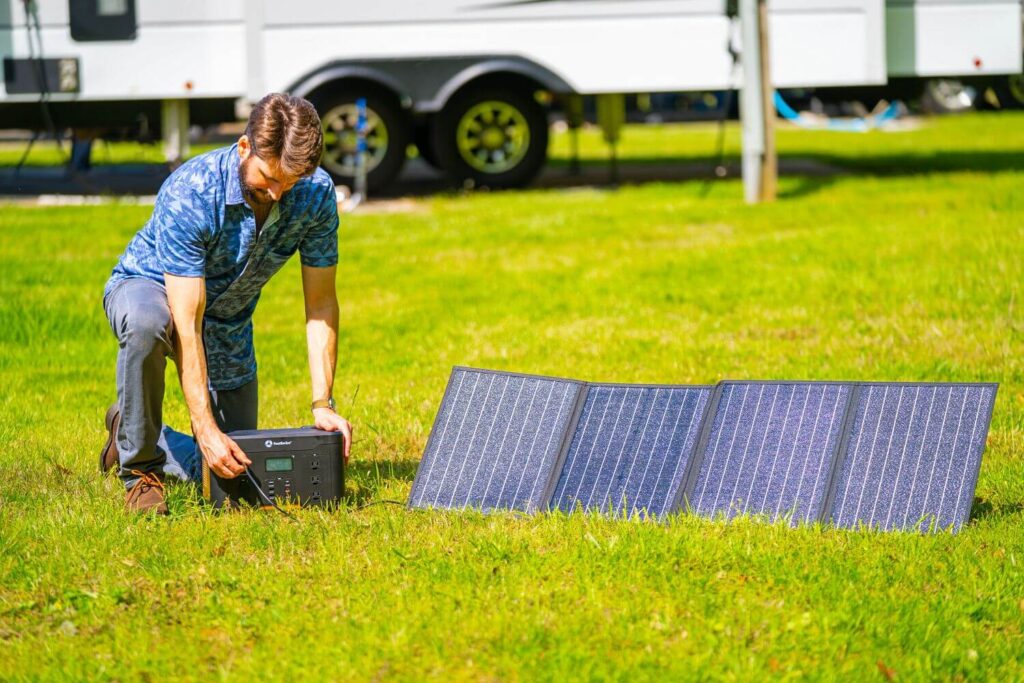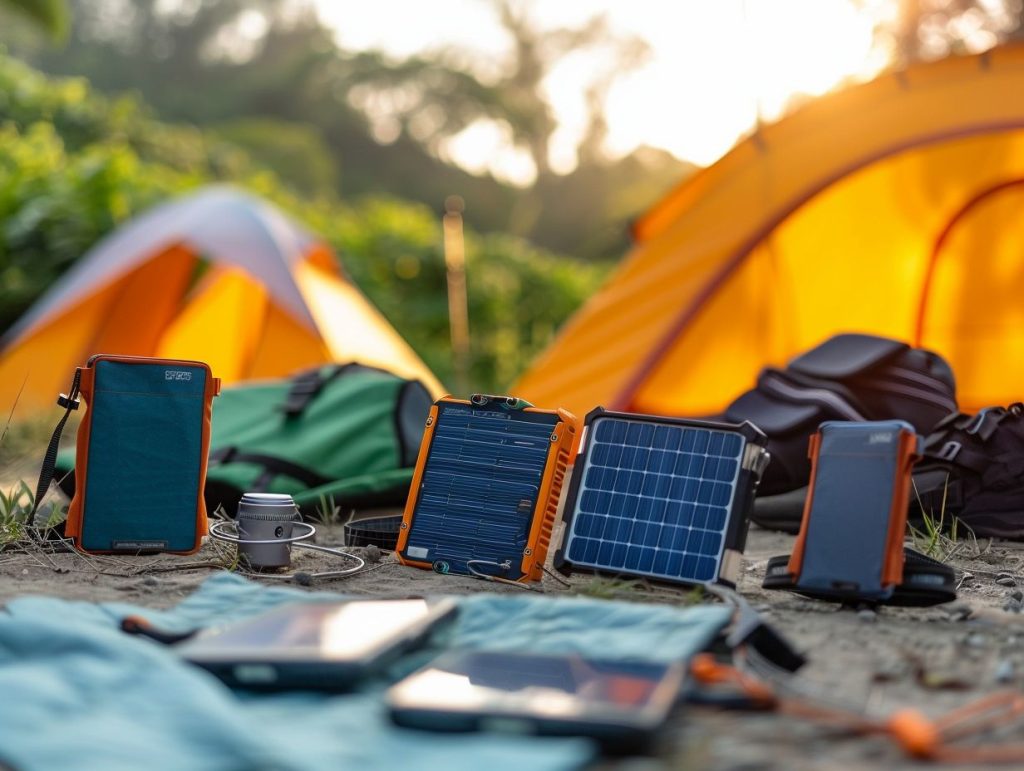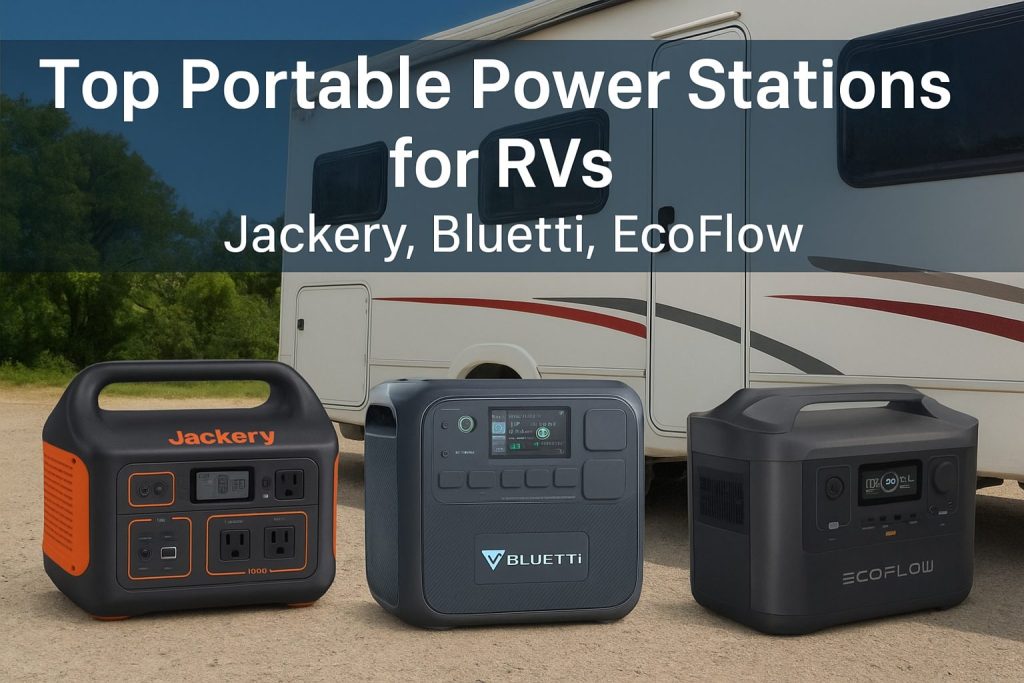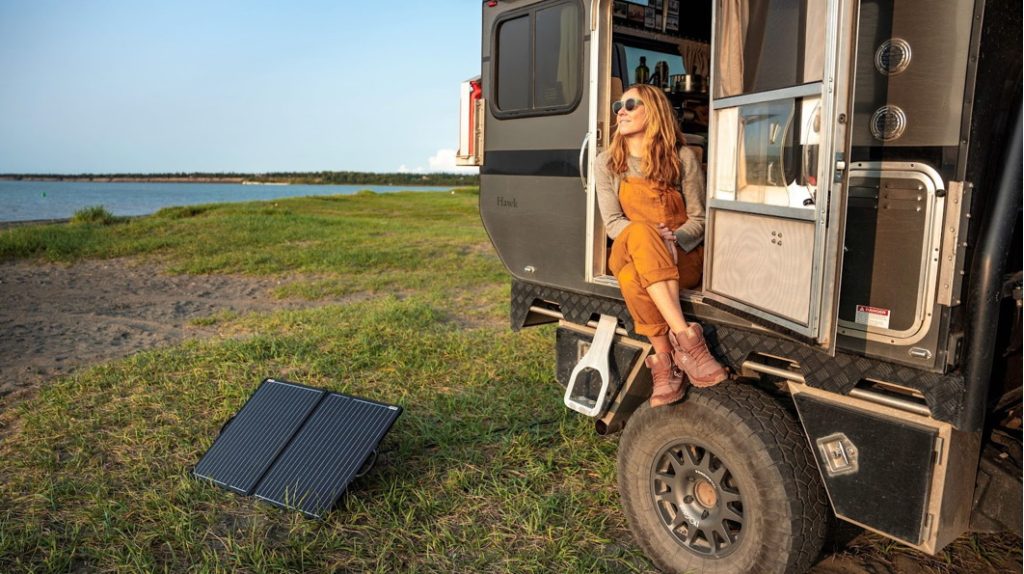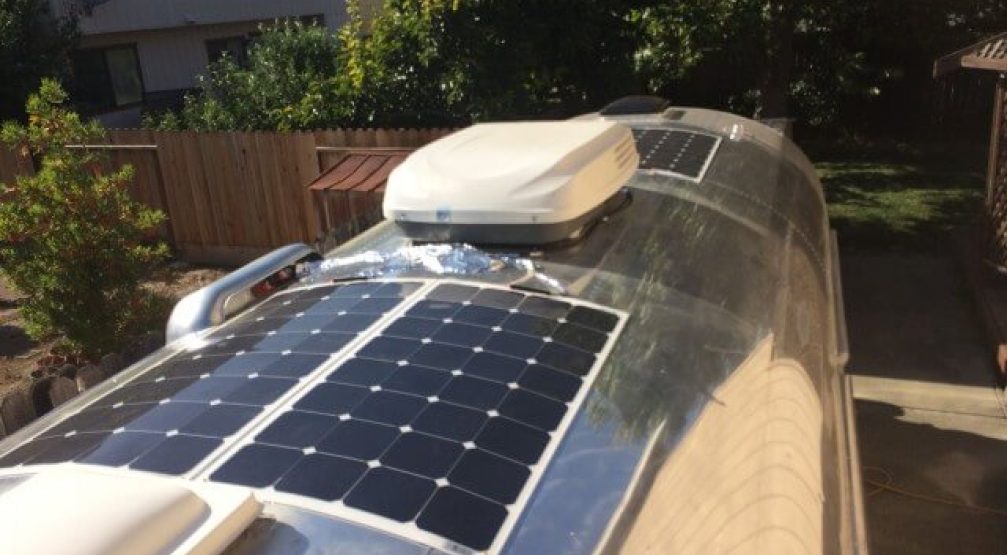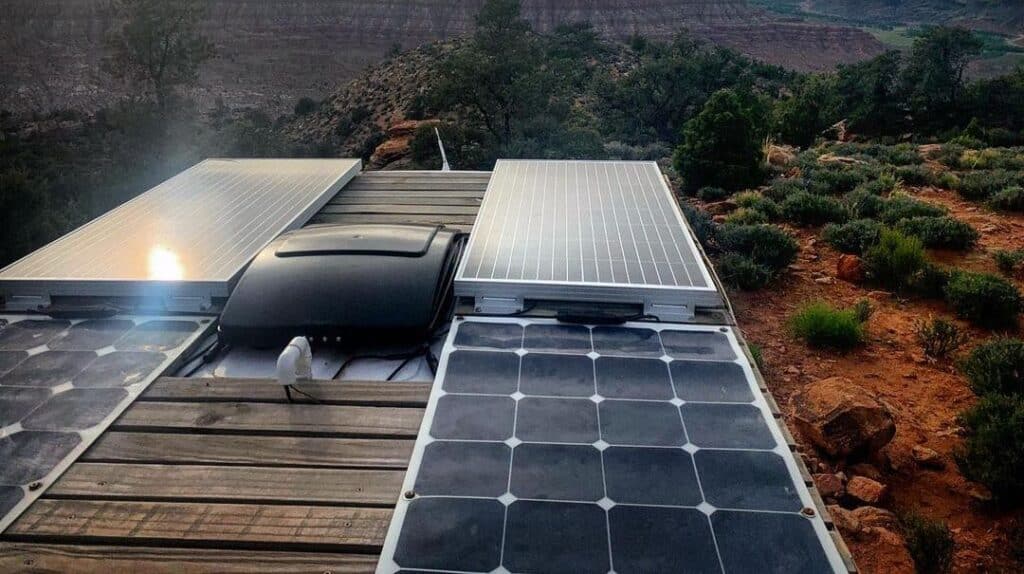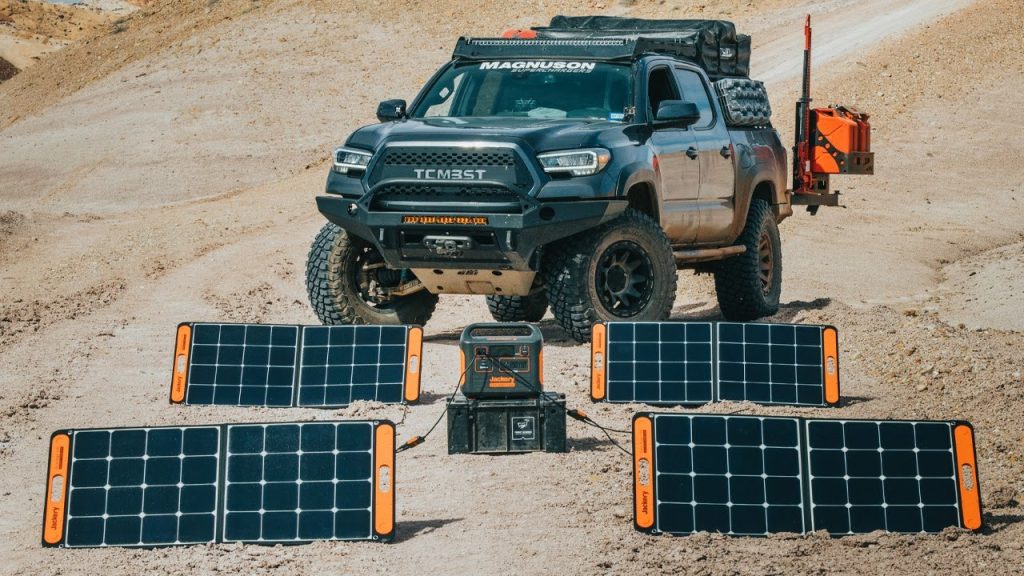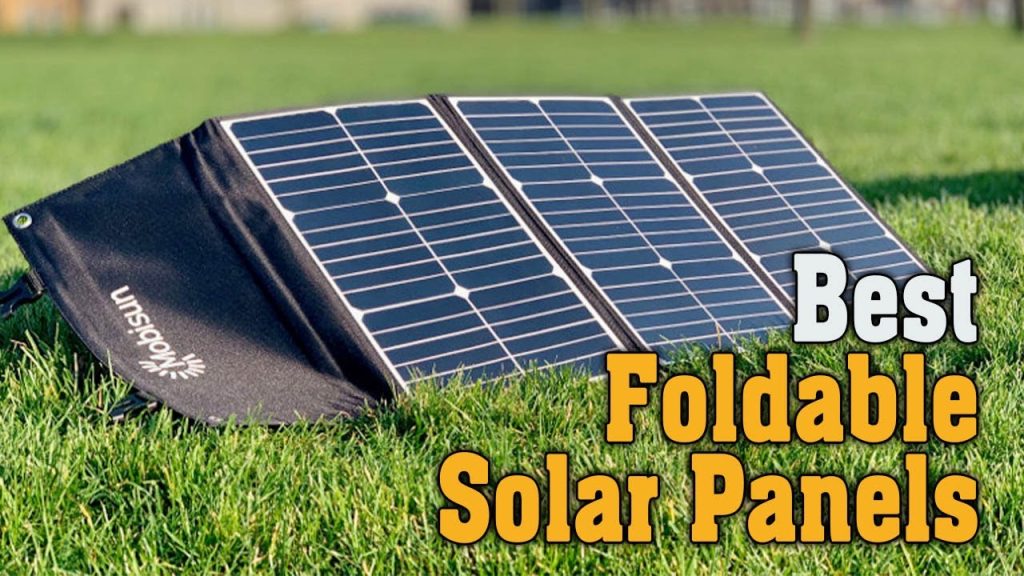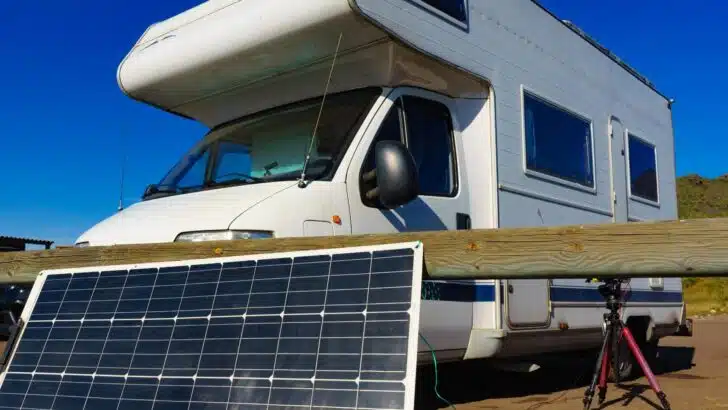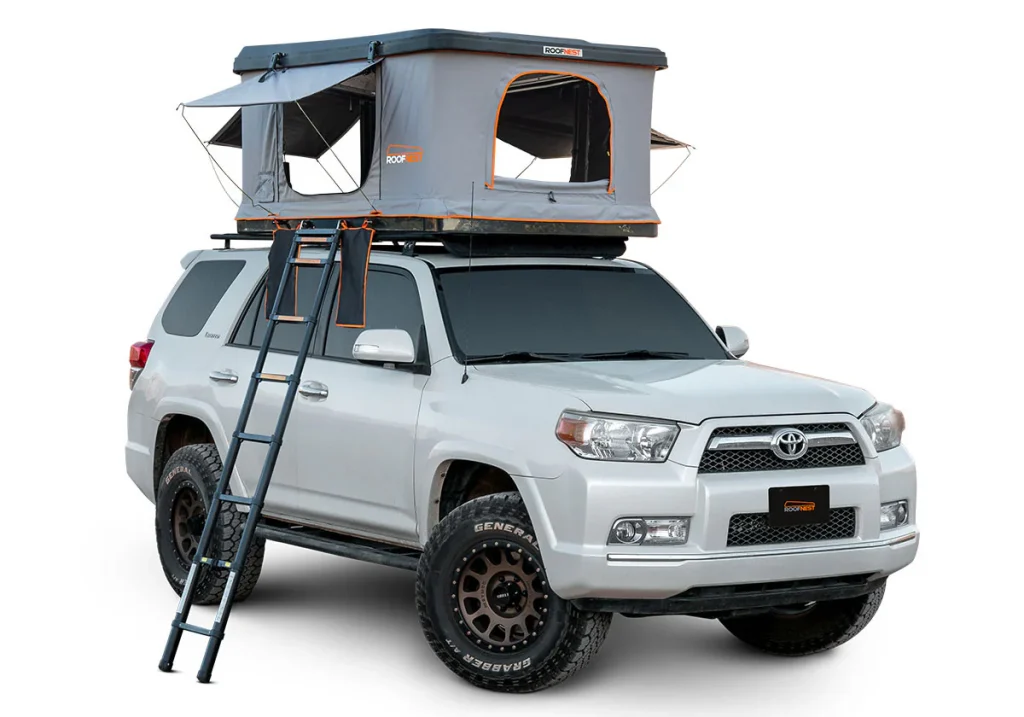Overland trailers are a great way to explore the outdoors while bringing the comforts of home. But being off-grid means you need a reliable way to power your devices, lights, and small appliances. This is where portable solar panels become essential. They give you power independence and flexibility. You can set them up quickly when you reach a campsite, move them to follow the sun, or store them safely when traveling.
Choosing the right solar panel can make a big difference. The right setup keeps your batteries charged even in cloudy weather or during longer trips. It ensures your lights, fridge, and other essentials keep running without worrying about draining your battery. With so many options on the market, knowing what to look for helps you get the most efficient, durable, and practical solution for your trailer.
In this guide, we will help you find the best solar panels for overland trailers. We will explain what factors to consider, like wattage, portability, and durability. Then, we will review the top five portable solar panels available today. By the end, you will have the information needed to choose the perfect solar panel setup for your next adventure.
What to Consider When Choosing Portable Solar Panels
Wattage and Power Output
Wattage matters a lot when you use solar panels for a trailer. A fridge, lights, battery and other gear will draw power. The more wattage a panel has, the more output it can produce. If you pick a panel with too little wattage, you might not keep up with your loads. Portable panels are often lower wattage than fixed roof panels. Fixed panels on a trailer roof can stay in sun as you drive or camp. Portable panels give flexibility—they can be moved to better sun. But they may not match the output of roof-mounted panels.
Portability and Setup Ease
When you are on the move, how easy a panel is to carry and set up makes a difference. Look for panels that fold, have a carry case, or are light. A panel that sets up quickly helps when you arrive at camp late or need to pack early. Also, being able to position your panel for optimal sun matters: some sites have shade or trees. A portable unit you can move gives you better sun exposure than a fixed panel under shade.
Durability and Weather-Resistance
Trailers travel rough roads, dusty trails, rain, sun and wind. You need panels that can take this. Check the IP rating (for example IP65 means dust-tight and water-jet resistant) and see if the materials look rugged. Strong connectors matter too—they should resist corrosion and rough handling. If a panel fails under rain or dust, you lose power in the middle of a trip. Good durability means worry-free use in real travel.
Compatibility with Battery Systems and Controllers
A solar panel is just part of your system. You’ll have a battery bank (12 V is common in small trailers; 24 V in larger rigs). Make sure your panel matches your battery voltage or uses a compatible charge controller. There are two main controller types: PWM (pulse width modulation) and MPPT (maximum power point tracking). MPPT is more efficient especially when sun is weak or voltage drops. You also need the right connectors and perhaps extra cables to integrate into your trailer’s power system. If you skip these checks you may buy a panel you can’t fully use.
Value for Money and Brand Reliability
When overlanding you want gear that works and lasts. A good brand often means better support, quality control, replacement parts and clearer specs. But you also want value: don’t overpay for features you won’t use. Balance cost vs performance: a moderately priced panel that fits your needs may beat a high-end unit you can’t fully use. Always check brand reviews, warranty, and how the panel performs in real travel situations.
🔋 Portable Solar Panel Comparison Table
| Feature | Renogy 200W Portable Solar Panel | Renogy 200W Solar Panel Blanket (N-Type) | DOKIO 150W Portable Foldable Solar Panel Kit | GRECELL 200W Portable Foldable Solar Panel | ACOPOWER 200W Portable Solar Panel Kit |
|---|---|---|---|---|---|
| Type | Foldable Suitcase | Foldable Blanket | Foldable Suitcase | Foldable Suitcase | Foldable Suitcase |
| Max Power Output | 200W | 200W | 150W | 200W | 200W |
| Weight | 13.89 lbs (6.3 kg) | 10.53 lbs (4.8 kg) | 17.94 lbs (8.14 kg) | 17.94 lbs (8.14 kg) | 17.2 lbs (7.8 kg) |
| Dimensions (Folded) | 23.72″ x 22.99″ x 1.97″ | 16.54″ x 4.13″ x 15.83″ | 25.82″ x 21.1″ x 2.95″ | 25.82″ x 21.1″ x 2.95″ | 42.2″ x 21.5″ x 2″ |
| Cell Type | Monocrystalline | N-Type Monocrystalline | Monocrystalline | Monocrystalline | Monocrystalline |
| Efficiency | 25% | 25% | High Efficiency | 23.5% | 23% |
| Charge Controller | Included | Not Included | 10A PWM | Not Included | 20A LCD PWM |
| Water Resistance | IP65 | IP65 | Not specified | Not specified | Waterproof |
| Ideal Use Case | RVs, trailers, off-grid camping | Lightweight, compact storage, quick setup | Budget-friendly, compact setups | High-efficiency, space-saving setups | High-power, reliable charging |
| Price Range | $299–$369 | $249–$299 | $119–$149 | $349–$399 | $219–$249 |
Top 5 Portable Solar Panels for Overland Trailers
Below are detailed reviews of the five portable panels we selected. Each entry has a clear description, key specs, pros and cons, and a short note about how it fits overland trailer use.
#1 Renogy 200 W Portable Solar Panel
The Renogy 200 W portable panel is a foldable N-type monocrystalline charger built for camping and mobile use. It uses high-efficiency cells and folds into a compact kit with kickstands and outputs for power stations and 12 V systems. This design aims to give high real-world output while staying easy to store.
Key Specs
- Rated Power: 200 W
- Cell Type: N-type monocrystalline (high efficiency; ~25%)
- Folded Size & Weight: varies by SKU (blanket and suitcase versions)
- Protection: Weather-resistant (IP65 or similar)
- Outputs: MC4 / DC, plus USB-A and Type-C (on some models)
Pros
- High real-world efficiency with N-type cells
- Powerful 200 W output for faster charging
- Multiple form factors (blanket, suitcase)
- Durable, weather-resistant construction
Cons
- Heavier and larger than 100 W panels
- More expensive than entry-level options
- Some models use PWM controllers—verify SKU
#2 Renogy 200 W Solar Panel Blanket (N-Type)
This is Renogy’s thin, ultra-light 200 W N-type solar blanket. It uses an 8-fold design that packs very small. It often adds USB-A and USB-C ports for charging devices directly and targets users who need space savings.
Key Specs
- Rated Power: 200 W
- Cell Type: N-type monocrystalline (better low-light performance)
- Weight: ~8.8 lbs (8-fold blanket SKU)
- Folded Size: Small backpack-friendly pack
- Ports: USB-A / Type-C (on some variants), plus DC outputs
Pros
- Extremely light and compact for tight storage
- High-efficiency N-type cells for better real-world output
- Useful USB ports for device charging
Cons
- Less rugged than a hard suitcase panel
- May require adapter cables to connect to battery banks or MPPT controllers
#3 DOKIO 150 W Portable Foldable Solar Panel Kit
The DOKIO 150 W foldable kit is a compact, travel-friendly monocrystalline panel. It folds small, weighs under ~8 lb, and usually ships with a standalone PWM controller and a long cable to keep the battery or charge controller in shade. It targets solo campers and small trailers.
Key Specs
- Rated Power: 150 W
- Cell Type: Monocrystalline
- Folded Size & Weight: ~19–21 in folded, ~7.3 lb
- Cable Length: ~9.8 ft (3 m) for flexible placement
- Controller: Often includes PWM; MPPT not always included
Pros
- Very lightweight and compact
- Long cable allows safe shaded placement for electronics
- Good value for small rigs and occasional off-grid use
Cons
- Lower peak power (150 W) than 200 W options
- Often ships with PWM controller; MPPT upgrade improves performance
#4 GRECELL 200 W Portable Foldable Solar Panel
GRECELL’s 200 W portable panel aims to pack heavy wattage into a light, foldable frame. It uses ETFE lamination and monocrystalline cells. Models include kickstands and multi-output cables (XT60, Anderson, etc.) to work with power stations and batteries. The maker highlights high conversion efficiency and light folded weight.
Key Specs
- Rated Power: 200 W
- Conversion Efficiency: ~23–23.5%
- Folded Size & Weight: Lightweight (~10 lb or less)
- Protection: IP65 weather resistance
- Outputs: XT60 / Anderson / MC4 depending on bundle
Pros
- High conversion efficiency for solid real-world output
- Lighter than many other 200 W foldables
- Multiple output connectors for flexible hookups
Cons
- Build quality varies by seller; check reviews and SKU
- Some users prefer rigid roof panels for long-term mounting
#5 ACOPOWER 200 W Portable Solar Panel Kit
ACOPOWER sells a 200 W portable suitcase/briefcase kit that usually includes a 20 A waterproof charge controller. The kit is built as a plug-and-play option for 12 V batteries and solar generators. The brand markets the kit as lightweight and easy to set up for camping and RV use.
Key Specs
- Rated Power: 200 W (commonly 2 × 100 W panels in suitcase style)
- Included Controller: 20 A LCD waterproof charge controller (PWM on many kits)
- Conversion Efficiency: Low-to-mid 20% range
- Outputs & Connectors: MC4, Anderson, or adapters for battery clips depending on SKU
Pros
- Complete kit with controller and cables—plug-and-play ready
- Lightweight for a 200 W suitcase-style panel
- Competitively priced vs. some premium brands
Cons
- Many kits include PWM controllers; MPPT is better for efficiency
- Mixed user reviews on long-term durability; check current SKU reviews
How to Choose the Right Size for Your Trailer Setup
Estimate Your Power Needs: Battery Size, Loads
Start by listing what loads you’ll run in your trailer: lights, fridge, water pump, fans, phone/laptop charging. Then check how many amp-hours (Ah) your battery has and how long you’ll use each load per day. For example: fridge draws 4 amps and runs 10 hours = 40 Ah. Add all loads to get a daily usage estimate. Then choose a panel size that can replenish that usage.
Matching Panel Wattage to Charge Rate Needed
Once you know daily Ah usage (e.g., 100 Ah), convert to watt-hours (Wh) by multiplying by battery voltage (12 V × 100 Ah = 1200 Wh). Then divide by solar hours you expect (say 5 sun-hours) to get required wattage (~240 W). Considering losses (controller inefficiency, shading) you might pick ~300 W of panels to be safe. Portable panels rated at 150-200 W may suffice for light loads; bigger systems need 200 W+ or multiple panels.
Considering Space, Weight, Mounting vs Portable Deployment
Check how much space you have on your trailer or inside for storage. Portable panels can be stored in a bag or box; roof panels require mounting hardware and add weight up high. If you plan to move rough roads, lighter portable gear might be better. If you have roof space and will leave panels mounted, fixed panels may be easier. Consider weight, storage, deployment time, and whether you will carry/passenger/trailer weight limits.
Planning for Expansion and Future Upgrades
Think ahead: you might add more batteries, power more devices, or camp longer. Choose a system that allows adding extra panels or swapping in a larger controller. For example, buy a panel kit that supports “add another panel later” and leave space or wiring for expansion. This future-proofing means you won’t need to replace everything when your needs grow.
Tips for Getting the Most From Your Panel on the Road
Place Panels for the Best Sun
Solar panels work best when they face the sun directly. In the northern hemisphere, point them south; in the southern hemisphere, face them north. Use a small tilt — around 30–45 degrees — to capture more sunlight. If your trip lasts all day, move the panels every few hours to follow the sun’s path. Even small adjustments can greatly increase power output.
Keep Panels Clean and Shaded-Free
Dust, dirt, and shade can cut power by half or more. Wipe the surface with a soft cloth often, especially in dusty or rainy areas. Make sure there are no shadows from trees, tents, or your trailer. Shade on just one corner can drop efficiency across the whole panel.
Use Quality Cables and Connectors
Good cables make a big difference. Poor or thin wires cause energy loss before it reaches your battery. Use heavy-gauge, weatherproof cables and solid MC4 connectors for better current flow. Check for loose or corroded connections often, especially if you travel on bumpy trails.
Monitor Your Charging System
Watch your charge controller and battery monitor daily. This helps you spot problems like low voltage or poor charging. Set up a MPPT controller for better energy capture, especially in changing light. Protect your battery by avoiding overcharge or deep discharge — both shorten battery life.
Store Panels Safely on Rough Roads
Portable panels can bend or break if not packed right. Keep them in their carry case or padded storage bag when driving. Avoid placing heavy items on top of them. For foldable panels, secure cables and hinges before transport. Proper care ensures your panels stay reliable trip after trip.
Final Thoughts
Choosing the best solar panels for overland trailers can make every trip smoother and more self-reliant. A good solar setup means you can camp longer, power your essentials, and stay connected even far from the grid. Matching the right panel to your power needs—your battery size, daily energy use, and travel style—makes all the difference.
The five products reviewed here stand out for their power, portability, and reliability. Whether you need a foldable blanket for quick setups or a rugged panel kit for extended stays, each option offers solid value for different budgets and trailer setups.
Investing in quality solar gear is more than convenience—it’s freedom. With the right panels, you can explore with confidence, knowing your trailer will always have the power it needs. Keep your system clean, store it well, and enjoy many worry-free adventures powered by the sun.

